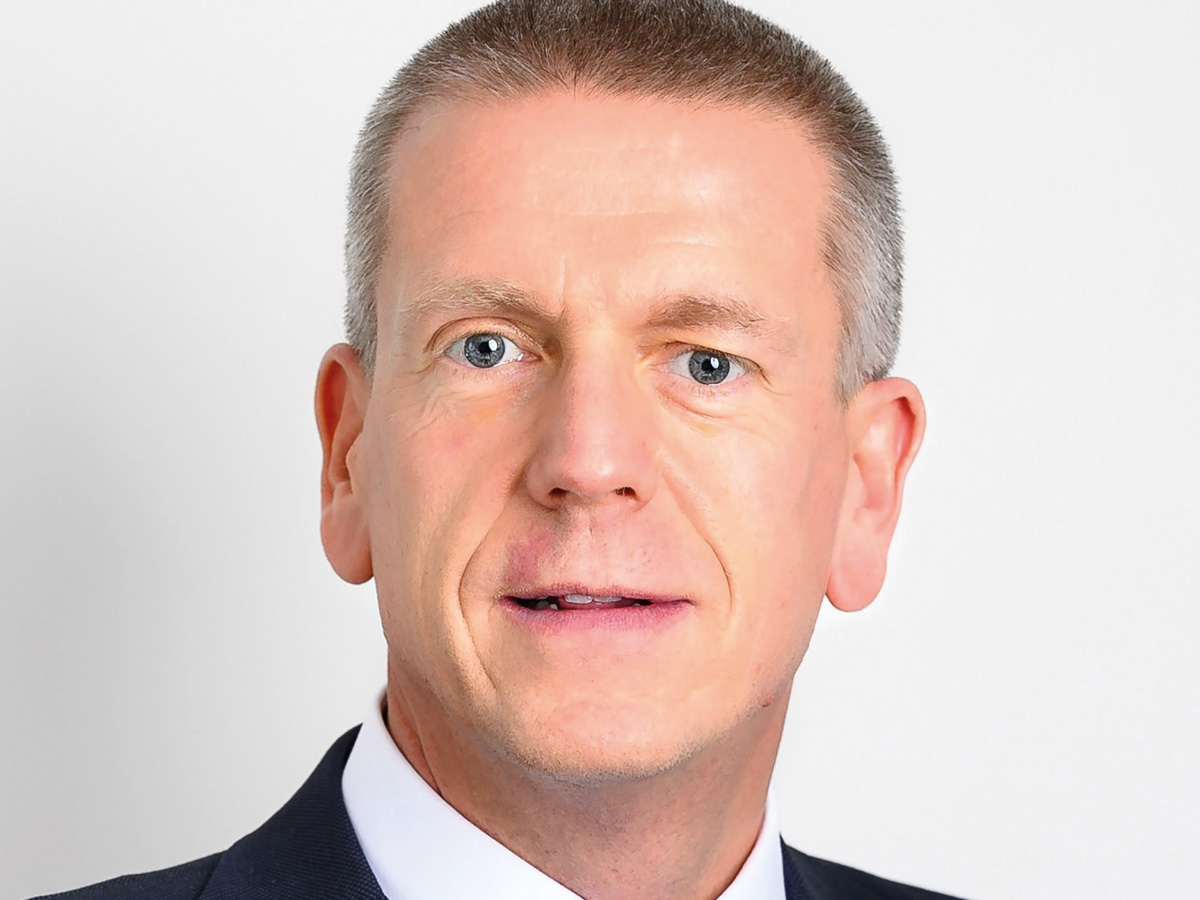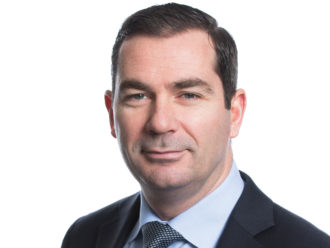You took up this role in November. How have the first few months been?
It’s been great. It has been a learning curve as I’m new to the local government pension scheme (LGPS) environment. Everyone has been helpful. And everyone is passionate about the objectives we have in terms of running the LGPS for the members and employers.
Even though I didn’t know the LGPS, I have knowledge of pensions in general, whether it is governance, asset classes or asset managers. That has helped me to get up to speed relatively quickly.
Bruce Miller, the previous chief investment officer, stayed on until January. Did that help?
Absolutely. It was helpful to find out about the existing state of the fund and the team. He helped me to get to know the people, the processes, the providers and the systems in a more efficient way than if I had to do it without him. I wish him well.
You joined the scheme from pension fund consolidator TPT Retirement Solutions and before that spent more than 10 years at the investment management arm of the National Grid’s UK pension scheme [Aerion]. So what appealed to you about your new role and what experiences have you brought with you?
It is different, yet with some similarities. I came from an in-house asset management arm at National Grid, which was running one scheme. After that was wound up, I joined TPT, which had a different, multi-employer dimension and so was broader in terms of its funding and investment and sponsor and trustee stakeholder management than I had experienced before.
Even though I didn’t have any direct experience with the LGPS, the asset classes were the same, the portfolio was similar. Yes, the governance is different, but every structure has its own governance.
So for me, it felt like a natural progression and even though I had no direct knowledge [of the LGPS] I could bring that different perspective.
So it was a mixture of a challenge while still exploiting your experience?
It is definitely a challenge. There are new things, in terms of governance structure, various priorities, different asset portfolios compared to what I had seen in the corporate world. But the basics of asset liability management, stakeholder management, asset class knowledge and strategic portfolio construction were things I had done quite extensively.
What have been your priorities for the fund?
My priority has been to get to know what is going on. Before I joined, I briefly spent time getting to know the team in an informal setting. That was the priority: to get to know the team, what motivates them and how they operate.
The second centered around the governance structure, discovering how the LGPS operates. Then there are the processes, providers and asset managers that we use, and get to know, inside out, the state of the fund. Then I could start thinking about how I want to evolve it.
I gave myself six months to get my feet under the desk. We are coming to the end of that. Are there any changes I want to make yet? The answer is: not quite. I’m finalising my ideas and proposals and testing them internally, as well as with the various stakeholders. So there will be changes. But I don’t have anything to share yet.
What are your ambitions for the fund?
We have a clear strategy. It is not original, but the goal is to pay pensions. What, of course, does that imply for the investment function?
We are an LGPS, we are multi-employer and we are running the fund for several councils as well as other employers. We are focused on delivering risk-adjusted returns and they have been excellent. The other dimension is responsible investment.
The interesting point is that the latest funding level is high, in line with what most of the LGPS are experiencing, particularly in Scotland. But that doesn’t mean there is going to be a significant change in strategy. We are a long-term investor.
Another point is that we collaborate with four other funds. That includes direct investment management, so running portfolios for them, as well as advising on some private market transactions.
To be clear, this is not Lothian acting as a ‘standard’ asset manager. It is not pooling. It is effectively sharing expertise, knowledge and bandwidth with our partners. It benefits all parties and the people we support. And when we go to asset managers, we can access different deals.
The final item is people. I met the team before I started, and they are passionate about what they do. But it is important to make sure they are recognised and continue to be developed. These are my various ambitions.
Lothian is the second largest local government pension scheme in Scotland and has its own FCA-regulated investment team. So does that mean you manage all of your assets yourselves?
Not 100%, but a significant amount is managed in-house. For example, in listed equities we run 90% of the assets ourselves, with internal portfolio managers. And equities are the largest asset class. We have some sovereign debt exposure, (but not traditional LDI, we don’t have any levered exposure). We also run property in-house. That gives us significant benefits, particularly around cost.
Then there are the other real assets, which we have been managing for a long time, using secondaries as well as co-investments on top of traditional primary funds. Of course we do have external managers in some asset classes. We do not shoehorn everything to an in-house approach. But if we can deliver great net returns with a reduction in cost, which is what we do, then that is worth doing.
What are the other benefits of this approach?
You pay a lot less than you would for an external manager, and there can be a potential misalignment of interest between an asset manager and an asset owner. We have no such conflict on what strategies to run. It comes down to delivering the best returns.
Could you give me an insight into your investment approach?
I believe any investment approach should start with the objectives we are trying to achieve. So different things will be relevant based on different circumstances which differ for each fund.
The second, related point, is to avoid being dogmatic. Market circumstances should mean different approaches. You need to be able to adapt. Be sure to retain flexibility and then focus on what matters. Finally, focus on what makes a difference to your objectives, what ‘moves the needle’.
Could you therefore give me an investment breakdown of your portfolio?
At the moment the strategic allocation to equities is 60%, and that is a broad listed-equity allocation. We have 20% in real assets, including property and infrastructure.
The rest is across fixed income, which is in gilts and US treasuries which have been built up in the last few years. And some credit split across investment-grade mandates, which are managed externally, as well as some private debt exposure.
So it is quite a simple mix of asset classes. And there is a key focus on equities and real assets, which I think is right, but the increase in government bond allocations has been a response to the huge increase in yields.
You mention you have a good chunk in infrastructure, which will please the government. What is the reason for that?
This started around 20 years ago, before infrastructure was an established asset class. The recognition at the time was that it diversified commercial property, the classic real asset that pension funds held, and is a nice bridge between bonds and equities: with income at a lower risk. 20% to real assets including property, seems the right allocation.
Will the economic or political outlook lead to any investment adjustments?
There probably will be, but it will not be a knee-jerk move. We want to avoid too much tinkering. We are a long-term investor so there will be no significant movements. It could be movement at the strategic level and there could be changes on a tactical basis in terms of how we are positioned.
David Vallery, LPF’s chief executive, has said the fund is known for its commitment to “sustainably growing its pension fund through good stewardship of its assets”. What does this mean in reality?
It is very important. I call it responsible investment (RI) rather than ESG. And what David says means that we make sure RI is embedded in all investment decisions across asset classes.
I am sure everyone says that, but in practice for us, running equities and property in-house means we have a real consistency in our approach with access to the relevant data. Having that consistency across the team is important.
So responsible investment is central to the fund’s investment approach?
Absolutely. And you could say it has to be, because of regulatory pressure which is only going one way. But that shouldn’t be the only reason. In a public fund you are going to get pressure from multiple stakeholders. But again it is not only that. It is the right thing to do. It is not just climate. It is broader than that. It is aligned with our objective to pay pensions.
Presumably, you want to build on this.
Yes, of course. What I would say is some asset managers have disassociated portfolio management and RI functions. We don’t have that at Lothian, RI considerations are embedded into the portfolio managers’ processes.
The LGPS system has evolved differently in Scotland given the LGPS 2014 Act included only England and Wales. How do you view it?
There is no pooling in Scotland. We have 11 funds in the country and that is a good forum for us to share information as we face similar challenges.
Is pooling something you would welcome in Scotland or does the more collaborative model you have work well?
If the collaborative model is a route to pooling, then that is fine. If pooling doesn’t happen then it is fine as well. Collaboration is something we can do within the current set up and we should continue, as long as it benefits all parties.
If pooling was to be mandated like it was in England, we would of course follow any requirements.
So the collaborative model is working effectively?
We collaborate with three of the Scottish funds and one in Northern Ireland. But the way we exchange knowledge across all the funds is something we want to pre- serve and maintain, regardless of the developments on pooling.
What do you believe will be the biggest challenges that you will face in your role?
The market environment goes without saying. Then there will be continuing to get to know the governance, the LGPS environment and potential pooling.
But the biggest challenge is to continue to fulfill our objectives: responsible investment, correct allocations, managing the portfolios in an appropriate way, controlling costs and generating the best risk-adjusted returns. As well as responding to directives, responding to stakeholders and, importantly, how the team is resourced and structured.
What has been the biggest lesson you have learnt from your career?
Two things. The first is to be transparent. Always be open.
The second is to be approachable. Make sure you interact with people. Make sure your door is always open.
EMMANUEL BOCQUET’S CV
November 2023 – present
Chief investment officer
Lothian Pension Fund
May 2016 – October 2023
Head of investment
TPT Retirement Solutions
May 2005 – February 2016
Head of alternative investments
Aerion Fund Management
March 2003 – December 2004
Portfolio manager
Gulf International Bank
June 2001 – February 2003
Director
HypoVereinsBank
November 1996 – June 2001
Manager, interest rate options
ANZ Investment Bank
November 1994 – November 1996
Trader, JPY interest rate options
Credit Lyonnais





Comments